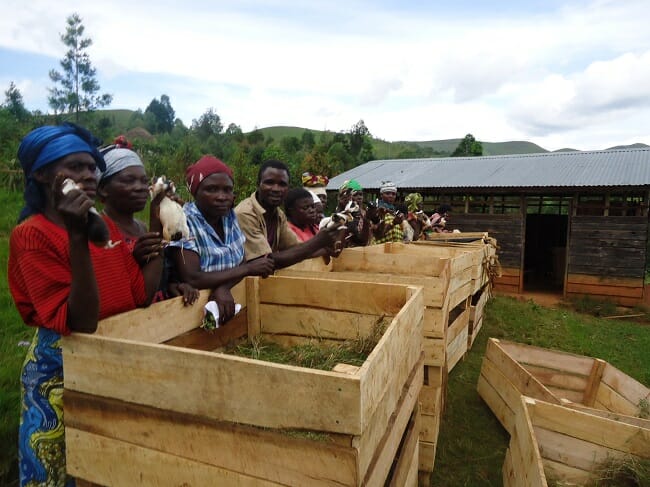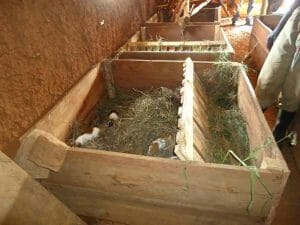Improvement of guinea pig breeding: where do we start?

Originally published January 29, 2015 at 15:44
For a while, the attention is focused on a tiny rodent mammal called guinea pig.
In a study conducted by the Grenier organization for Integrated Development among the 134 inveterate breeders of guinea pigs in 17 villages in Walungu and Kabare territory, it should be noted that the improvement of guinea pig rearing still has a long way to go.
According to the results of the survey carried out from July to December 2012 among traditional breeders of guinea pigs in Walungu and Kabare territory, 98% of breeders are unaware of the care to be given to guinea pigs once they are sick and have no ideas the nutritional quality of the fodder they offer to their livestock.
The study reveals that:
– feeding of guinea pigs is based on combinations of asteraceae, poaceae, sweet potato leaves or cabbages depending on seasonal availability;
-In 42% of cases, children take care of fodder collection, followed by women (30%) and men (28%);
-The average livestock per household is 25 guinea pigs, yet we would like to consume at least two guinea pigs per person per week.
-“When the number of the Guinea pigs increases in the same hut, they start dying if they were not killed by other enemies such as cats or dogs,” say 75% of respondents.
-In 7% of cases, a prejudice of consumption by women (5%) and men (2%) has been reported and yet they have difficulty to afford 1kg of beef per week for just five US dollars.
2% of respondents say they treat guinea pigs with squash leaves, but have not been able to name the diseases they treat.
Because of its high prolificacy and the lower cost of breeding, guinea pigs have proved their nutritional and economic efficiency in the villages of South Kivu where the consumption of meat and fish is an affair of the rich.
However, it is unrealistic to fully and sustainably enjoy this windfall without revolutionizing the current breeding mode of guinea pigs followed by a real integration into an adequate agricultural system, which does not seem a priority for the moment!
